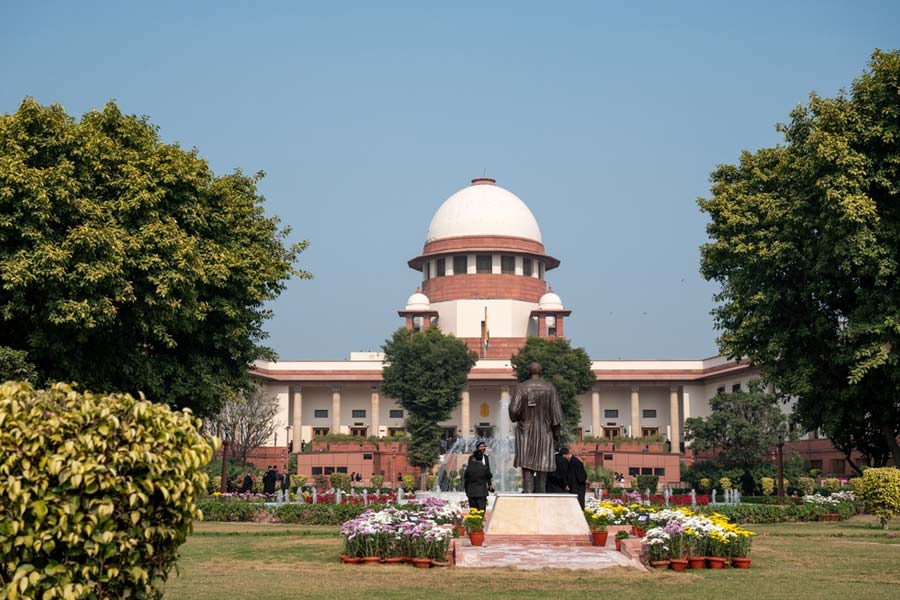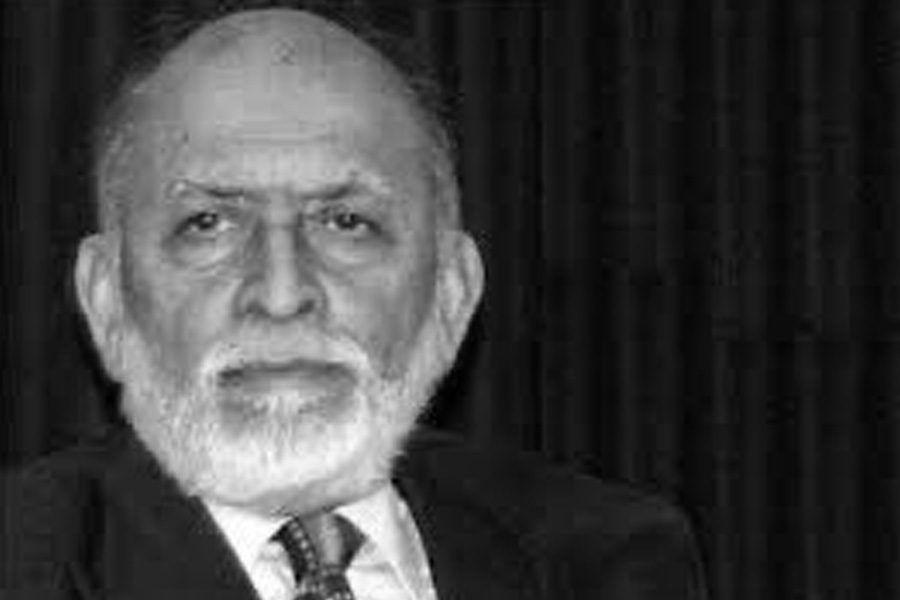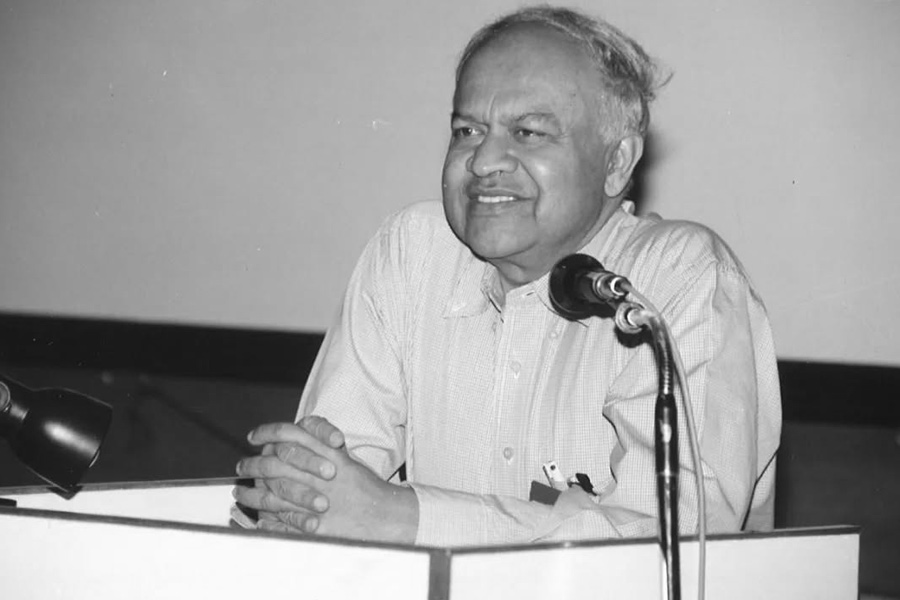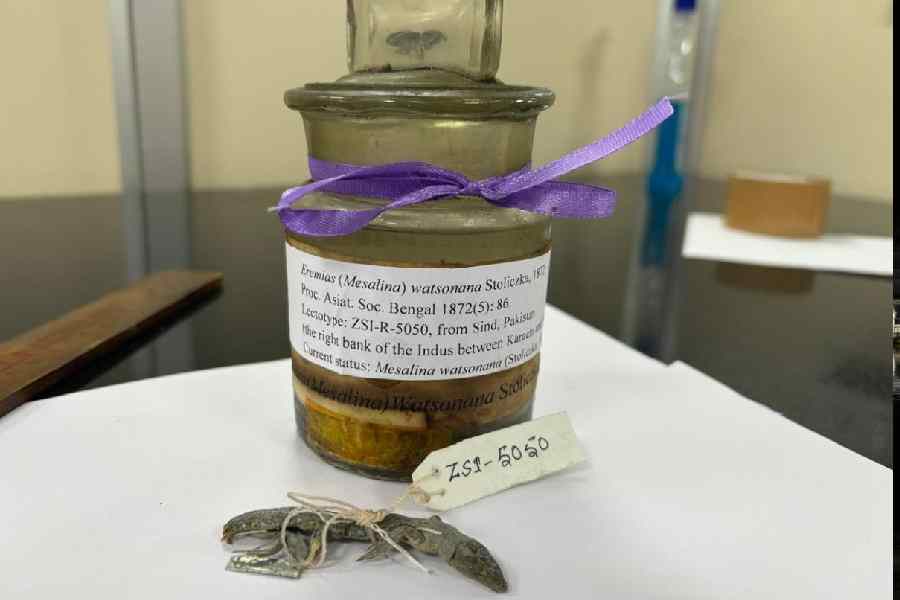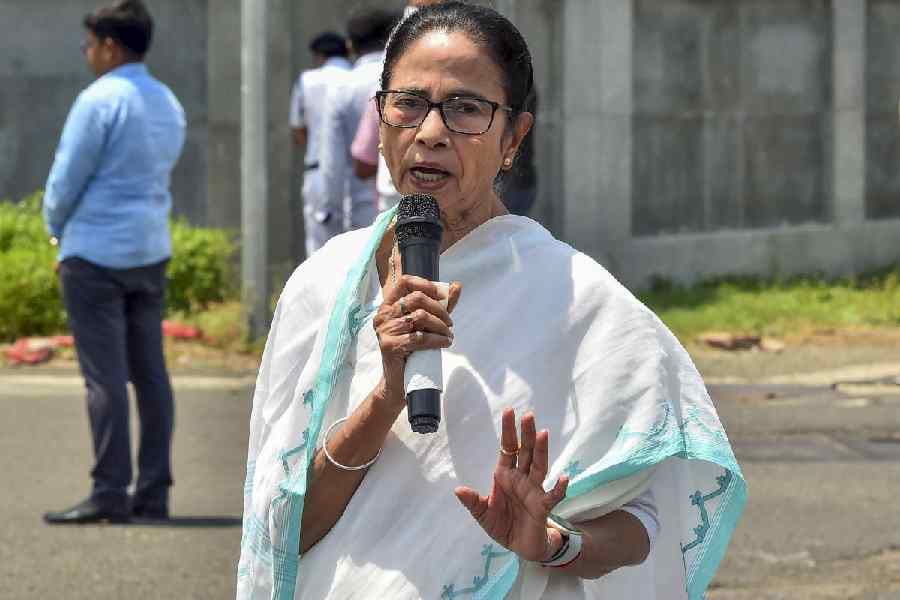 |
| Azhar Usman Style: The Funny MuslimPunchline: “It’s bad at the airport. Some Arabians got picked up just because they had a geometry textbook, some rulers and a stencil. Charges of possessing weapons of mass instruction.” Photograph courtesy: Azhar Usman/Ridz |
Indians in the US are doctors, engineers and techies, right? Umm, how about tacking on stand-up comedians to that list? Take a look at Rajiv Satyal, who likes to call himself “the Woody Allen of Indian-American stand-up comics”. “So what if he let the girl pick up the tab for dinner?,” asks Satyal with a puzzled expression on his face. The punchline: “She ate way more than I did.” (Ok, it sounds funnier when you hear it, than in print).
A few years ago, it was Indo-Canadian comedian Russell Peters who broke the mould and showed the world that Indians could be funnymen and women. Now a number of young Indian American stand-up comics are storming the stage facing the tough-to-please crowds — both desi and wider audiences — with jokes that are mostly about the Indian-American or the ‘Fresh Off The Boat’ way of life.
Take a look at Dan Nainan, who starts with the advantage of being half Malayalee and half Japanese, a combination that’s ripe for humour (after all, it’s like mixing sushi and fish curry). “I get my sushi from the 7-Eleven,” he goes too (yes, yes, all these jokes come with the warning that they sound funnier on stage than in cold print).
Or take Chicago-born Azhar Usman, who makes the most of his Muslim heritage and who’s known as the Funny Muslim in America. The Taliban probably doesn’t approve but he has toured over 20 countries with the Allah Made Me Funny comedy show launched with veteran African-American stand-up Preacher Moss.
 |
| Dan Nainan Style: Multi-cultural humour Punchline: “When I applied for the job at Intel, they said: ‘You’re Indian and Japanese? You don’t even have to interview!’” Pix: Brad Garrett |
Usman’s always looking over his shoulder to see if the Taliban are listening as he pokes fun at everything from idiosyncratic Muslims to the absurd reactions of Americans the moment a bearded Muslim man boards a plane.
“I’m sure most of you have never seen someone who looks like me smile before. Go on, quickly, take a picture,” says the comedian who has an unkempt, flowing beard.
As the tribe of onstage humorists grows, each one is also dishing up a different type of humour. You have laugh merchants like Washington D.C.-based Paul Singh, who talks about the immigrant experience. At another end, there’s up and coming comedian Radhika Vaz, who moved to New York from India in her late 20s. Vaz’s Indian roots show through clearly though she laces her act with plenty of cheery angst about being a woman and attitudes toward sex.
Or look at New York-based Vidur Kapur. Apart from the desi experience, Kapur, who’s gay, deals with themes like sexuality and racism. “I’m Indian, I’m gay and I’m an immigrant. The Indians go, ‘He’s gay!’. The gays go, ‘He’s Indian’. And the Americans go, ‘He’s a terrorist!’,” he mocks.
 |
| Vidur Kapur Style: The gay comic Punchline: “Indians in America aren’t even considered sexy. When was the last time you heard someone go ‘Hey, check out the booty on Lakshmi’.” Photograph courtesy: Vidur Kapur |
Then, there’s Los Angeles-based Maneka Madan, who performs under the mystifying moniker Monrok. She’s known for her dry point-of-view humour with her I-hate-everything and I-don’t-get-people schtick. “I hate feminists, I have to work,” goes one punchline. Monrok has risen in the world of laughter-makers and has her own non-ethnic comedy show called Diversity Night at L.A.’s biggest comedy club, the Laugh Factory.
The man who inspired these desi jokesters is clearly Russell Peters who with one crack after another blazed the trail for Indian American stand-up comedy. He’s in the big league and is said to earn around $15mn a year — no laughing matter, for sure. Indeed, many of the newer arrivals have performed with him.
“Russell’s success made it possible for all of us,” says Nainan. But if Peters raises a laugh with raunchy jokes on various cultures, newer stars like Aziz Ansari, who has also broken into the mainstream, are steering other paths. With his fast-talking improvised humour, Ansari regales audiences with a comic take on American pop culture. And he’s made it in films and television too.
How come Asian humour is selling in North America? It’s important to keep in mind changing demographics and also a wider worldview. So, when Satyal asks his audience, “Have you guys all heard of Bollywood?,” there’s a roar of assent — and not just from the Indians. Later in the show Satyal establishes his all-American credentials saying: “I’m from Ohio. I was the only brown-skinned guy in my class.” And Nainan is constantly cracking jokes about his dual Indo-Japanese heritage. “My mother is so Japanese, I came out cordless,” he quips.
 |
| Radhika Vaz |
The Indian laughter-makers all play on their Asian heritage in different ways. For instance, Satyal changed courses after some years to play up his Indian heritage. “I have a Mid-West accent and I was born here. So I don’t come off as that exotic but there’s no getting around the fact that I’m Indian. So I started to use that and it worked,” he says.
Meanwhile, Usman, whose father is a veterinarian from Bihar, began his Funny Muslim schtick even before 9/11. He always played on the fact of being an American Muslim from India but that only found an echo with audiences after 9/11. “Suddenly, the world’s psyche was fixated on the topic [of Islam], which caused the spotlight to shine on my work,” he says.
One of the mainstream successes is Monrok who does mostly non- ethnic humour — though she dresses Indian. She performs at big clubs like Laugh Factory and the Comedy Store. “Working in LA, I had friends who were doing different things. I realised I could do whatever I want,” she says.
Let’s get one thing clear. Indian immigrants are still ticking off the doctor- engineer-scientist checklist. And don’t think for a moment that the laughter merchants are un-educated hicks. They have all done the fancy-college- education, successful-corporate-career gig. Many even have day jobs.
 |
| Monrok Style: Dry point-of-view humour Punchline: “I hate it when white guys tell me that I’m exotic looking. Like, don’t make it seem like I’m some rare bird facing extinction. I’m Indian. There are a billion of us.” Photograph courtesy: Monrok |
So Usman was a lawyer before he flogged his law journals in 2004 to become a full-time stand-up. And Monrok was an analyst at an Internet firm when she began stand-up.
Nainan too played it textbook style by graduating from business school and then joining Intel. He strayed into comedy after taking stand-up classes to get over his stage fright — he was working with legendary Intel chief Andy Grove and had to make presentations at Intel meets around the world.
His big break came after some Intel colleagues saw his comedy class graduation performance. He soon ended up doing a big performance at an Intel international sales conference. “It was a big hit. That’s when I first thought I could do this,” recalls Nainan, whose nuclear physicist father is from Kerala. His psychologist mother is Japanese. Soon afterwards he started doing stand-up and later, moved to New York.
Like Nainan, Satyal, who has a self-deprecating style, and who makes constant digs at his own fumbling attempts at romance, started looking for laughs while working with Procter & Gamble (P&G). The impetus came when the materials engineer-turned-marketer won the amateur Funniest Person in Cincinnati. He began doing stand-up in 2002, testing his skills at small clubs in Ohio. Then, in 2006, he quit P&G, moving to LA to do stand-up full-time.
 |
Paul Singh |
Singh’s comedy too rests on the desi experience. He moved to the US 30 years ago but gave up his federal government job after winning several humorous speech contests. He began performing in 2002 and by 2007, stand-up had become a career. “The best part about stand-up is that your issues become your comedy material,” he says.
Meanwhile, Kapur uses the desi experience differently. Kapur grew up in Delhi, and graduated from the London School of Economics. He only moved to the US for a master’s degree in the 1990s. But while working in New York in 2001, he joined a stand-up class as a “creative outlet”. Soon, he was working his way through comedy clubs.
“It was hard to get stage time at the big clubs so I’d do small shows. Then slowly, within the South Asian community, I started developing a name,” says Kapur, who now performs at big clubs like Caroline’s. “I talk about my life experiences,” he says. That includes his being gay and people’s responses to sexuality.
Meanwhile, Vaz’s comedy is “focused on women” — and she’s not shy of explicitly sexual themes like losing her virginity either. “A lot of my story is about self-esteem issues, and as a woman, all the stuff that’s put on us and how it shapes what we are,” she says.
Vaz, who went to the US to do a master’s in advertising, took an ‘improv’ class nine years ago. She honed her skills doing improv and sketch comedy before graduating to comedic monologues like her one-woman show Unladylike.
 |
| Rajiv Satyal Style: Self-deprecating humour Punchline: “We never ate out in restaurants — unless my parents needednapkins. Or hot sauce.” Photograph courtesy: Rajiv Satyal |
But make no mistake. This can be a tough career choice. Nainan recounts how one of his shows before a group of senior citizens went down like a lead balloon. He says: “A lady using a walker came up to me and said, ‘This is very disappointing — a lot of people walked a long way to get here’.” On another occasion he performed before a group of recent immigrants who were mostly from Gujarat. He says some of his funniest jokes bombed “and yet they laughed uproariously at jokes that I didn’t think were that funny.”
But the trick is to be quick on your feet and if a joke doesn’t work, to move on to another one. And if there’s a heckler, says Satyal, the trick is “to let him zing you” a few times and get the audience on your side before you come back with a smarter line and “outdo him”.
Clearly, the Indian stand-ups are sparing no punches. They’re pushing the borders and they’re showing that Indians can be laugh-a-minute funsters too.


